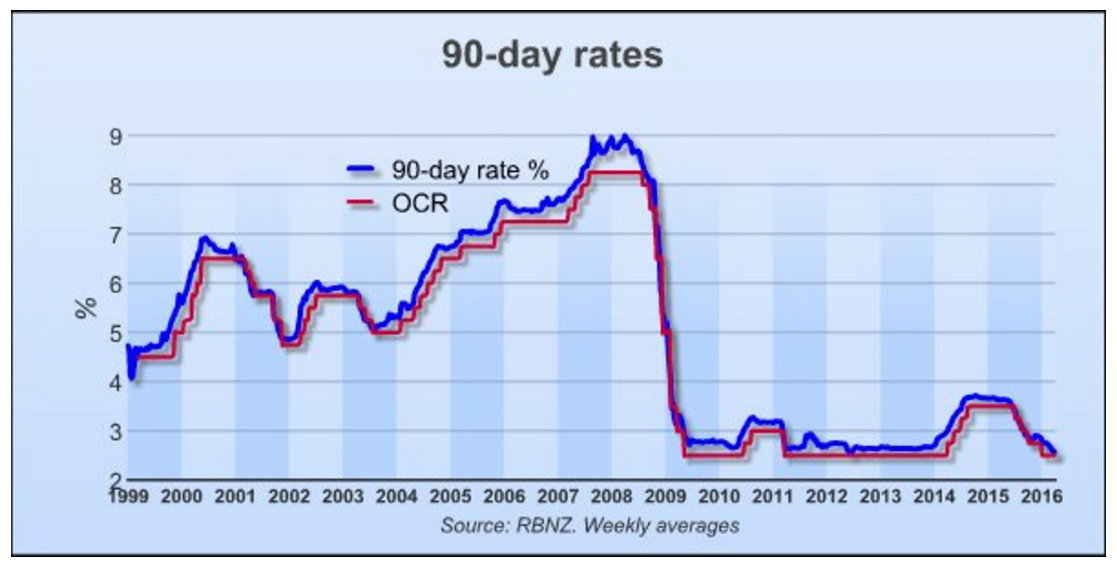New Zealand’s central bank has surprised markets this morning by announcing another official rate cut only three months after the last one. Governor Graeme Wheeler announced the 25bps reduction to 2.25%, citing a deterioration in the global growth rate, increased financial market volatility, higher credit spreads and low commodity prices. Of particular concern to New Zealand is the state of milk prices. Headline inflation low on the back of fuel and import prices, although the core inflation estimate is running at a higher rate.
The RBNZ is particularly concerned by New Zealanders’ estimates of future inflation, known as inflation expectations. Usually expectations run consistently higher than actual inflation but the RBNZ is worried “the decline in expectations becomes self-fulfilling and subdues future inflation outcomes.” The statement also refers to New Zealand’s trade-weighted index as 4% higher than forecast in December and attempts to “jawboning” the currency down, stating “a decline would be appropriate given the weakness in export prices.” A lower currency would make New Zealand exports more competitive and aid local manufacturers compete against imports. However, the RBNZ remains optimistic regarding NZ’s GDP prospects saying, “…domestic growth is expected to be supported by strong inward migration, tourism, a pipeline of construction activity and accommodative monetary policy.”
The RBNZ has tried to end on a positive note despite maintaining an easing bias. “Headline inflation is expected to move higher over 2016”. It then gives what has become standard central bank mantra of stating it “will continue to watch closely the emerging flow of economic data.”
For the full statement click here


